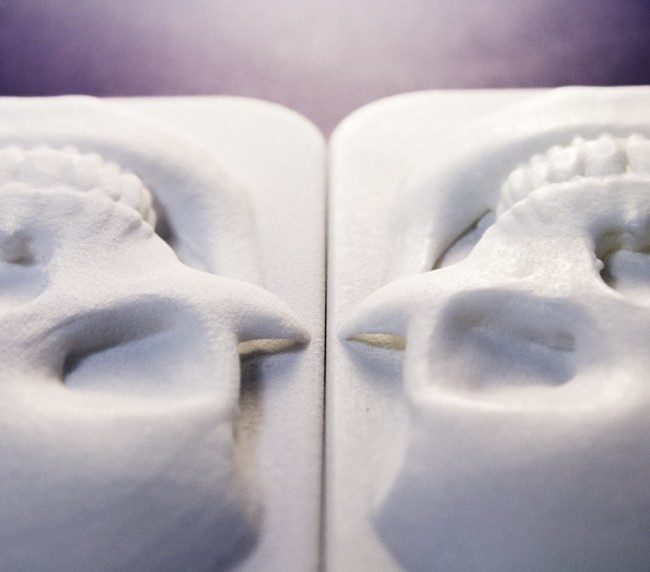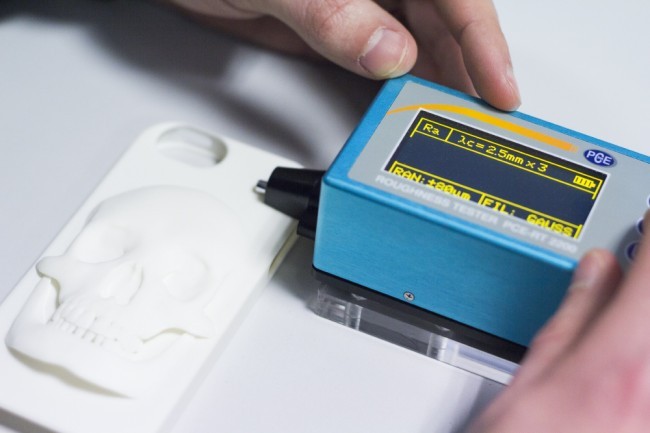The smoothest the nicest! two polishing options available
Posted By Pierre Leite on Feb 18, 2015 | 0 comments
Hello from Pierre! I’m in charge of research and development for the material and process at Sculpteo. Working in tandem with the engineering team, we do everything we can to make your 3D printed object look great, from pre-printing preparation up through the very end of the manufacturing process: polishing. Polishing is far from a simple process; let’s check out the particularities.
At Sculpteo, we have two polishing options available for the plastic material:
- Polished:
- polished through tribofinition, smoother to touch, layers still somewhat visible on rounded objects.
- Double Polished:
- polished through tribofinition, smoothest to touch, minimal layer visibility, only available with batch control (available on orders of 20+ objects). This option is not recommended for all models, as the tribofinition process removes a fine layer of plastic to smooth the surface. Thus fine design aspects may be damaged in the process.
The shell on the left is raw, whereas on the right it is polished. As you can see, the polishing one seems smoother and reflect better the light.
But why do we need to polish the 3D printed plastic products? To 3D print in our plastic material, we use a process called Selective Laser Melting (SLS). This technology works as a laser passes over successive layers of plastic powder. Each grain of this powder measures between 0,02 and 0,08mm.
After the melting and cooling processes, there is some air still captured inside the material, leading to about 5% of porosities. Moreover, some powder particles stick to the surface but don’t completely melt, resulting in a rough surface feel.
Before polishing the object, we complete a roughness test, which determines the geometrical profile of the object’s surface roughness. This offers a more exact finishing process from there. We did a test with a shell designed by Hugo Arcier:
Ra raw = 10,466 µm Ra polished = 4,347 µm Ra doubled polished = 3,352 µm
The smaller is the result of the roughness average (Ra), the smoother is the 3D printed object.
After the roughness test, comes the polishing. There are a couple ways to polish an object, depending on its material and design. For reference, something that is long and slim can be just as complicated as a complex object with empty cavities; even some simple shapes can be complicated to polish! This is because we need to both guard the corners and edges of the object, while polishing the flat surfaces. All of these particularities warrant their very own engineering team at Sculpteo! They determine the appropriate abrasiveness and technology to polish your object into perfection. That optimization makes all the difference.
For more information about the finishing option, you can take a look at our plastic material ressource page.


 Connect with Google
Connect with Google Connect with Facebook
Connect with Facebook

